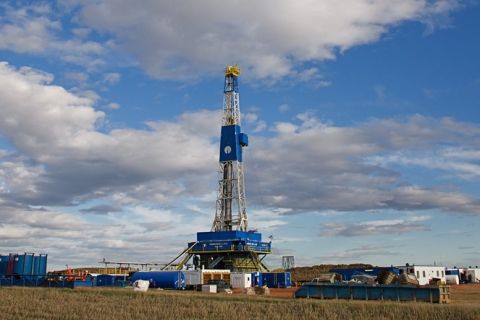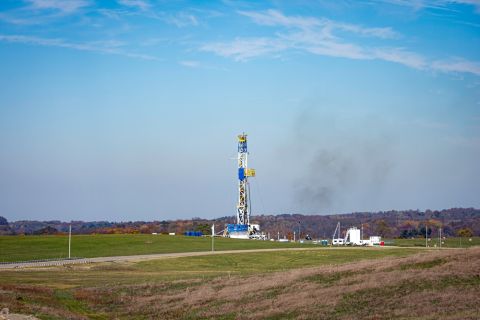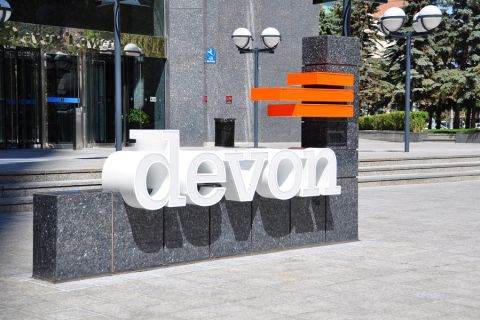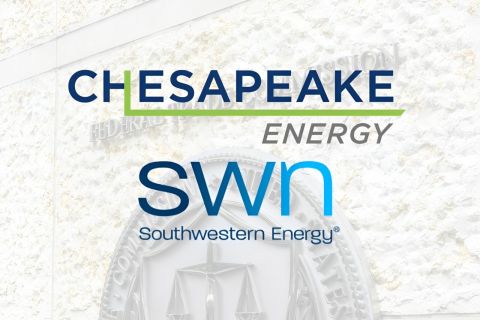As oil and gas targets have become more geologically complex, pressures have increased on seismic interpretation technologies to squeeze maximum value out of datasets and identify seismic anomalies that are linked to hydrocarbon-bearing structures and potential direct hydrocarbon indicators.
One means of doing this is through the use of attributes. Attributes today are integral to seismic interpretation, revealing otherwise hidden geological information and allowing relevant information to be extracted for integration purposes.
The two main drivers for using attributes in seismic interpretation projects are to improve visualization with seismic attributes used as a qualitative application revealing trends or patterns that are not visible in the original data and as a quantitative application that integrates the data through information carriers from different sources that can then be integrated via statistical methods.
The set of attributes introduced in this article falls into the qualitative category and is used to highlight unconformities, condensed sections, and various stratigraphic features within the seismic data. The attribute set has been derived from a HorizonCube, a plugin to OpendTect interpretation software.
Generating attributes

FIGURE 1. The sigmoidal bedding feature shown in Figure 1a was imported into a HorizonCube color overlay (1b) and then highlighted with a density attribute (1c). (Images courtesy of dGB Earth Sciences)
A HorizonCube is generated in two steps. First, a cube called a SteeringCube is generated that calculates local dip and azimuth values of the seismic reflectors. The SteeringCube is the main input to a 3-D auto-tracker algorithm that tracks the dip/azimuth field to generate a dense set of horizons throughout the 3-D seismic volume. The tracker can stop horizons if the vertical spacing falls below a certain threshold to generate a truncated HorizonCube.
Alternatively, the tracker can be instructed to continue tracking throughout the volume even if horizon spacing becomes infinitely small. This results in a continuous HorizonCube in which all horizons exist at every X, Y position. All horizons within a truncated and continuous HorizonCube represent correlated 3-D stratigraphic surfaces that are assigned a relative geological time.
These plugins are used, among other things, to assist in well correlations, unravel depositional histories, and find stratigraphic traps using sequence stratigraphic interpretation principles.
From a continuous HorizonCube a new family of attributes can be computed that help visualize geologic features that have previously been hidden in the seismic data. These include a density attribute that is indicative of pinch-outs, condensed sections, and unconformities; an event thickness attribute that highlights sedimentary bodies but also picks up local pinch-outs, condensed intervals, and local unconformities; a geometrical 3-D dip attribute that tends to be smoother than the dip computed directly from the SteeringCube and is helpful to interpreters looking to analyze and process seismic data in the stratigraphic domain; and a curvature attribute that tends to be smoother than the conventional volume curvature attributes computed from the SteeringCube.

FIGURE 2. The systems tracts thickness attribute allows interpreters to visualize depositional trends.
In addition, there are two other attributes that require further interpretation input from the user to be computed. These consist of a systems tracts attribute that assigns either a unique number or a common number to each systems tract and can be used to volume-render a particular systems tract as well as allowing for mathematical and logical manipulations per systems tract. As well, there is a systems tract isochron attribute that measures sequence stratigraphic unit thickness and is a key attribute in understanding how sedimentation filled the basin as a function of geologic time.
Application examples
One such example covers a 3-D seismic dataset in a block in the Dutch sector of the North Sea. The interval of interest is a sequence in the upper 1,200 ms that contains a number of interesting stratigraphic features. The most striking feature is the large-scale sigmoidal bedding with textbook-quality downlap, toplap, onlap, and truncation structures (Figure 1a).
Figure 1b shows the continuous HorizonCube developed as a color overlay over the interval of interest. Colors indicate relative geologic time, and horizons tend to merge together along unconformities and condensed sections. This property of the HorizonCube becomes apparent when the density of horizons in the plugin is computed in an 8-ms time gate centered on each evaluation point. The density attribute displayed in Figure 1c guides interpreters in sequence stratigraphic interpretations, with the high density values coinciding with unconformities and condensed sections.
Another attribute is the systems tracts thickness attribute, which requires an interpretation step on the part of the user, who subdivides a sequence into packages with similar depositional characteristics (Figure 2). Boundaries are set with the aid of a HorizonCube slider tool, with the interpreter displaying the dense set of horizons on seismic sections in the normal (structural) domain and optionally also in the Wheeler transformed (flattened seismic) domain.

FIGURE 3. In this example from the Carnarvon basin, only the basal part of the channel system shows large thicknesses.
In this case, the interval of interest is divided into three incomplete third-order sequences with highstand, falling stage, transgressive stage, and lowstand systems tracts (Depositional Sequence Model IV). The systems tracts thickness attribute, computed at every sample position in the interval, allows visualization of depositional trends in 3-D.
Here the 3-D volume rendering of the systems tracts thickness attribute captures the depositional trends of the entire second-order prograding system. The advantage of the systems tracts thickness attribute is that it allows for the study of 3-D depositional trends in sequences or systems tracts. The thickness variations reveal spatial distribution of depocenters and show how accommodation spaces were filled and destroyed over geologic time.
In a second example, a Tertiary channel system in the Carnarvon basin, HorizonCube event thickness and systems tracts ID attributes are used to study the field’s depositional architecture.
Figure 3 shows the HorizonCube event thickness attribute in 3-D using volume rendering. The yellow-to-red color trend shows seismic thicknesses in the range of 10 ms to 40 ms. The section view in the same display also shows that event thickness in the upper part of the channel is rather thin, with only the basal part of the channel system exhibiting large thickness values.
In addition, the 3-D volume rendering shows a nice straight channel trend with the thicker parts located in the channel center. Such regions could contain numerous intra-channel bars and could be stratigraphic traps. The thinner levees of this system are located in the outer boundaries of the system (yellow).
For the next attribute, the channel system was subdivided into five different stages and, to better understand the depositional architecture, a channel-stage ID attribute was computed and visualized (Figure 4).
Each stage in the display is represented by a unique ID that is color-coded with time-slicing through the attribute volume, helping to unravel the depositional history from Stage 1 to Stage 5.
Slice 1 shows the initial channel stage that is slightly meandering – a characteristic of a high-gradient slope environment that was filled with turbiditic deposits. Slice 2 shows a transitional phase from Stages 1 to 2. Slice 3 shows that channels are now sweeping as well as swinging in the area, which means that the channel systems are becoming more stable vertically (less incision) and more unstable laterally (more meanders and distributaries).

FIGURE 4. Four slices of the channel system indicate its depositional architecture.
Slice 4 shows distributary channels that overlie the Stage 3 deposits, and Stage 5 is the last stage of the system, after which no further channelization occurred.
This new family of attributes, through the automatic tracking of hundreds of horizons, is helping the seismic interpreter visualize geologic features such as unconformities, condensed sections, depositional trends, and depo-centers. These attributes will lead to a greater insight into the subsurface and improved exploration returns.
Recommended Reading
Williston Warriors: Enerplus’ Long Bakken Run Ends in $4B Chord Deal
2024-02-22 - Chord Energy and Enerplus are combining to create an $11 billion Williston Basin operator. The deal ends a long run in the Bakken for Enerplus, which bet on the emerging horizontal shale play in Montana nearly two decades ago.
Chord Buying Enerplus to Create a Bakken Behemoth
2024-02-22 - Chord Energy said Feb. 21 it will acquire Enerplus Corp. for nearly $4 billion in a stock-and-cash deal to potentially create the largest producer in the Williston Basin.
Ohio Oil, Appalachia Gas Plays Ripe for Consolidation
2024-04-09 - With buyers “starved” for top-tier natural gas assets, Appalachia could become a dealmaking hotspot in the coming years. Operators, analysts and investors are also closely watching what comes out of the ground in the Ohio Utica oil fairway.
Report: Devon Energy Targeting Bakken E&P Enerplus for Acquisition
2024-02-08 - The acquisition of Enerplus by Devon would more than double the company’s third-quarter 2023 Williston Basin production.
Chesapeake-Southwestern Deal Delayed Amid Feds Scrutiny of E&P M&A
2024-04-05 - The Federal Trade Commission asked Chesapeake and Southwestern for more information about their $7.4 billion merger — triggering an automatic 30-day waiting period as the agency intensifies scrutiny of E&P deals.





